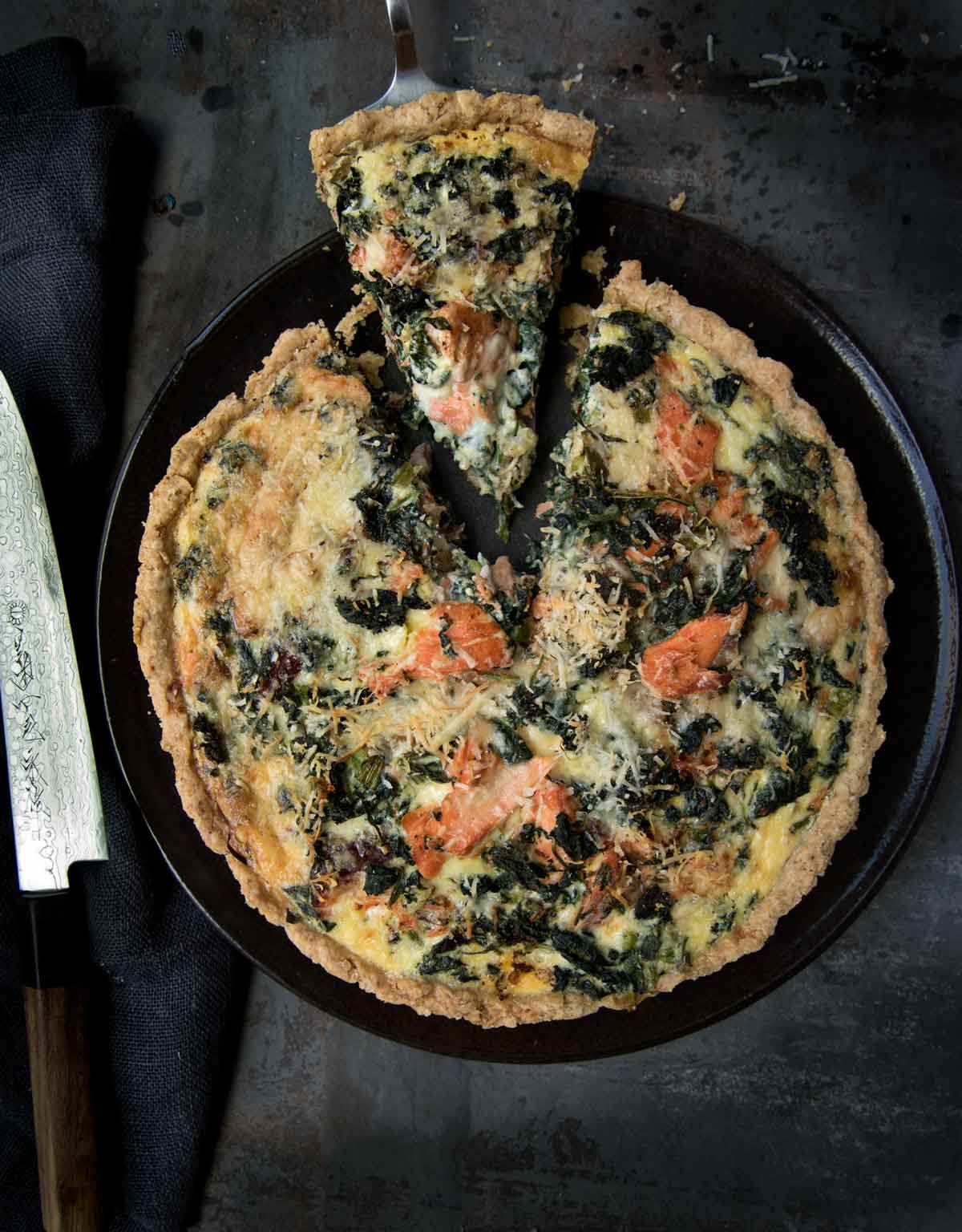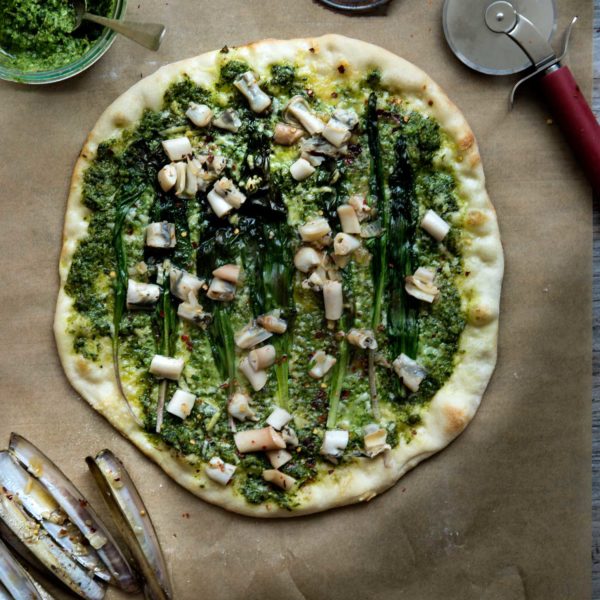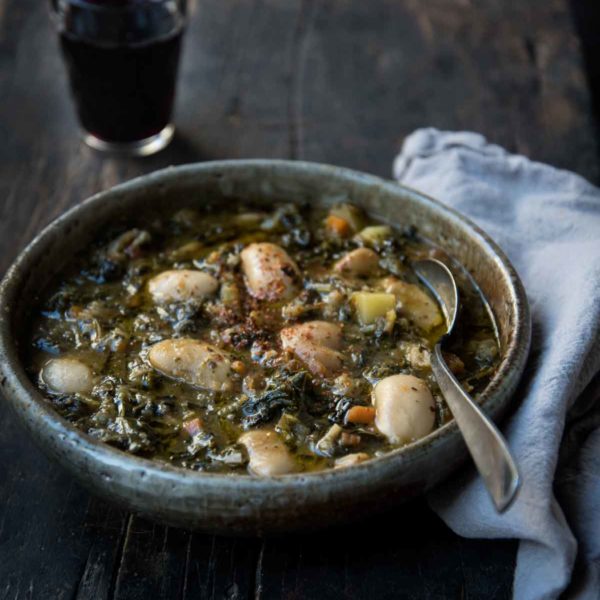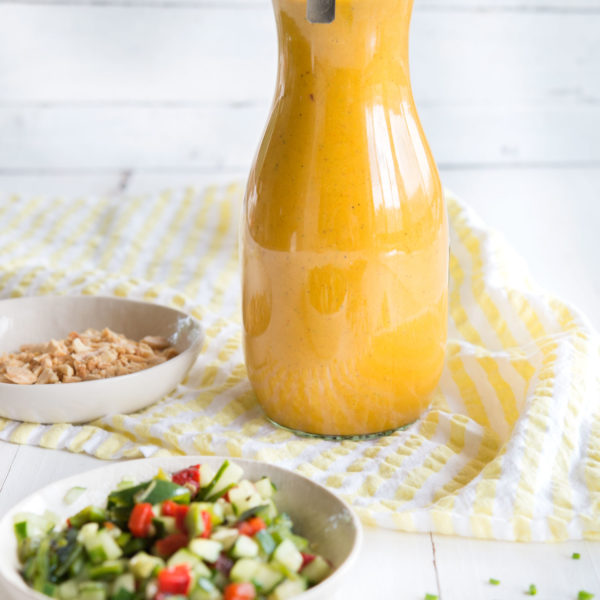Sightings of stinging nettle always make me think, ‘yes, spring has finally arrived.’ Historically, when we (meaning our ancestors) ate more seasonally (out of necessity), consumption of spring greens was a way to cleanse one’s body following a long winter diet of heavy foods and shelf-stable staples. Spring greens also provide a myriad of vitamins, minerals and phytonutrients (plant nutrients).
Stinging nettle are my unofficial signal that warmer weather is on the horizon.
Looking back on old posts, I realized it was just a few years back (wow, seven years now) that I first discovered stinging nettle while living in Washington, D.C. My adventures with stinging nettles have been a bit limited, namely green soups (perhaps, my favorite use for stinging nettles), mixed green pies (also tasty), pastas and pesto. Here’s a round-up from the blog:
2016 Stinging nettle tagliatelle with crab
2016 Ikarian Mixed Greens Longevity Pie
2015 Nettle, Ramp and Leek Soup
2014 Wild Greens Galette with Artichokes and Feta
2013 Stinging Nettle, Kale and Green Garlic Soup
2012 Stinging Nettle Pesto with Shirred Eggs
That’s a good start, but would love to hear from fellow nettle lovers. What do you like to do with stinging nettles? I’m all ears. Look forward to hearing from you, as the nettle season is just beginning…
I toyed with a few ideas for today’s recipe, but ultimately landed on a stinging nettle and smoked salmon quiche with a cornmeal crust (and a good amount of butter, which is essential for a nice, flaky crust).
The cornmeal I used is quite interesting. It’s a roasted white corn flour from the Iroquois White Corn Project (Victor, NY). The flour is made from heirloom corn developed from Haudenosaunee (Iroquois) plants with roots reaching back more than 2000 years. They roast the whole corn until it becomes a rich brown color, imparting a nutty flavor and preserving the whole grain, and then stone grind it into a medium-grind flour.
While stinging nettles grows wild, I generally let others do the foraging. Am neither brave nor confident in my foraging abilities.
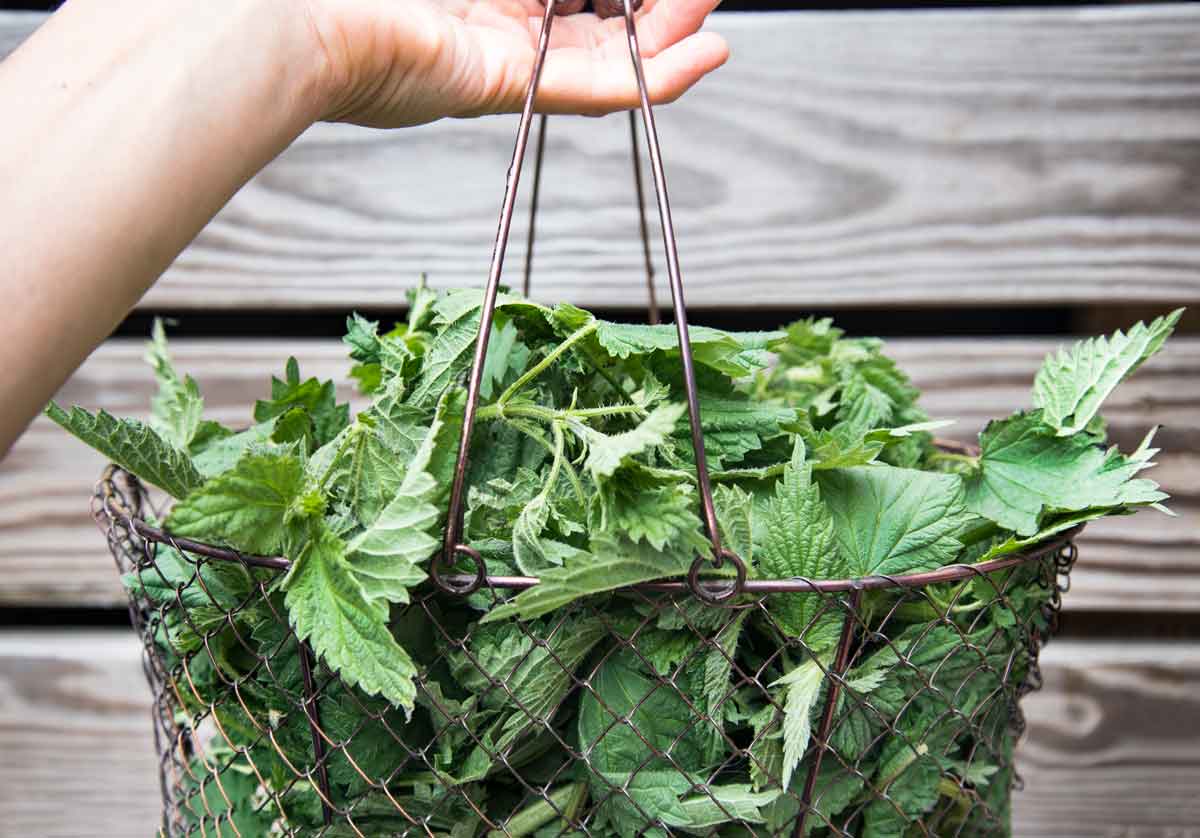
Be careful when handling stinging nettles, as their leaves and stems have stinging hairs (aka trichomes) that cause a painful stinging sensation when they come into contact with your skin. Cooking nettles (a quick blanch is all they need) deactivates their sting and makes them safe to handle and to eat.
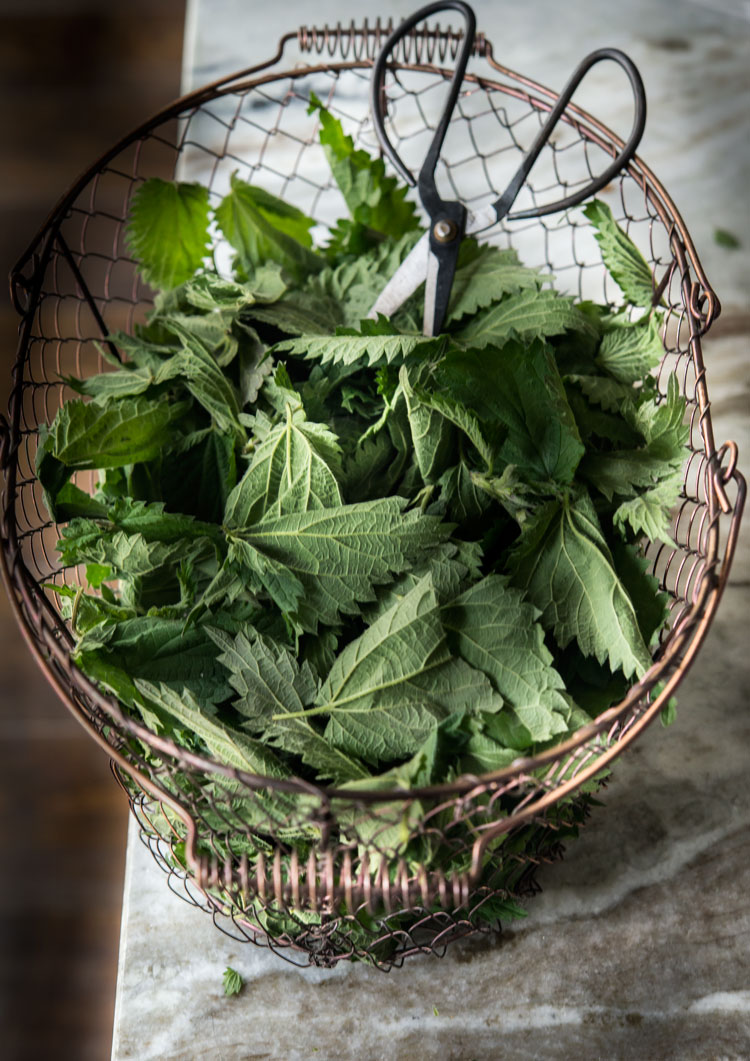
Cornmeal crust using roasted corn from the Iroquois White Corn Project…
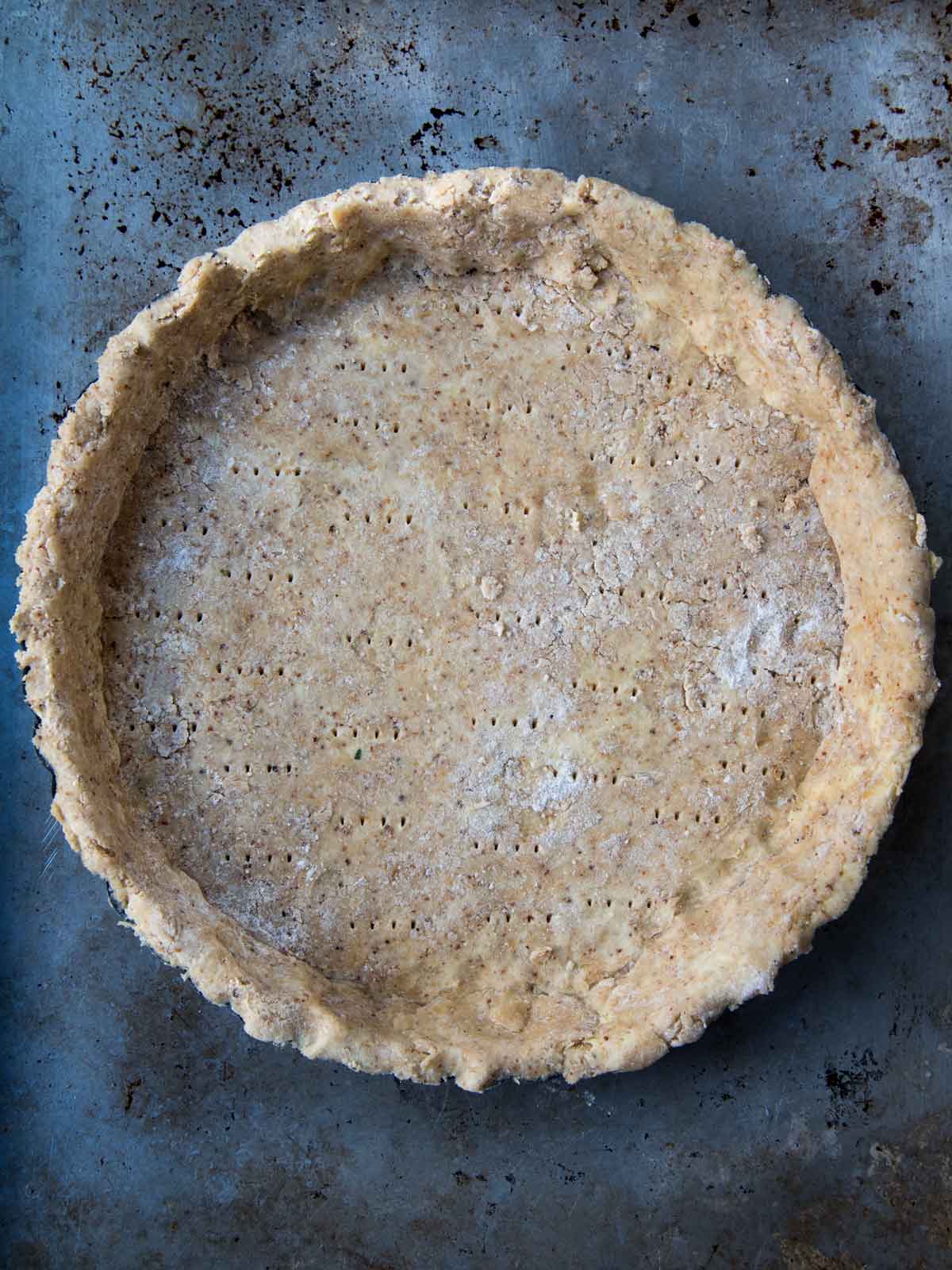
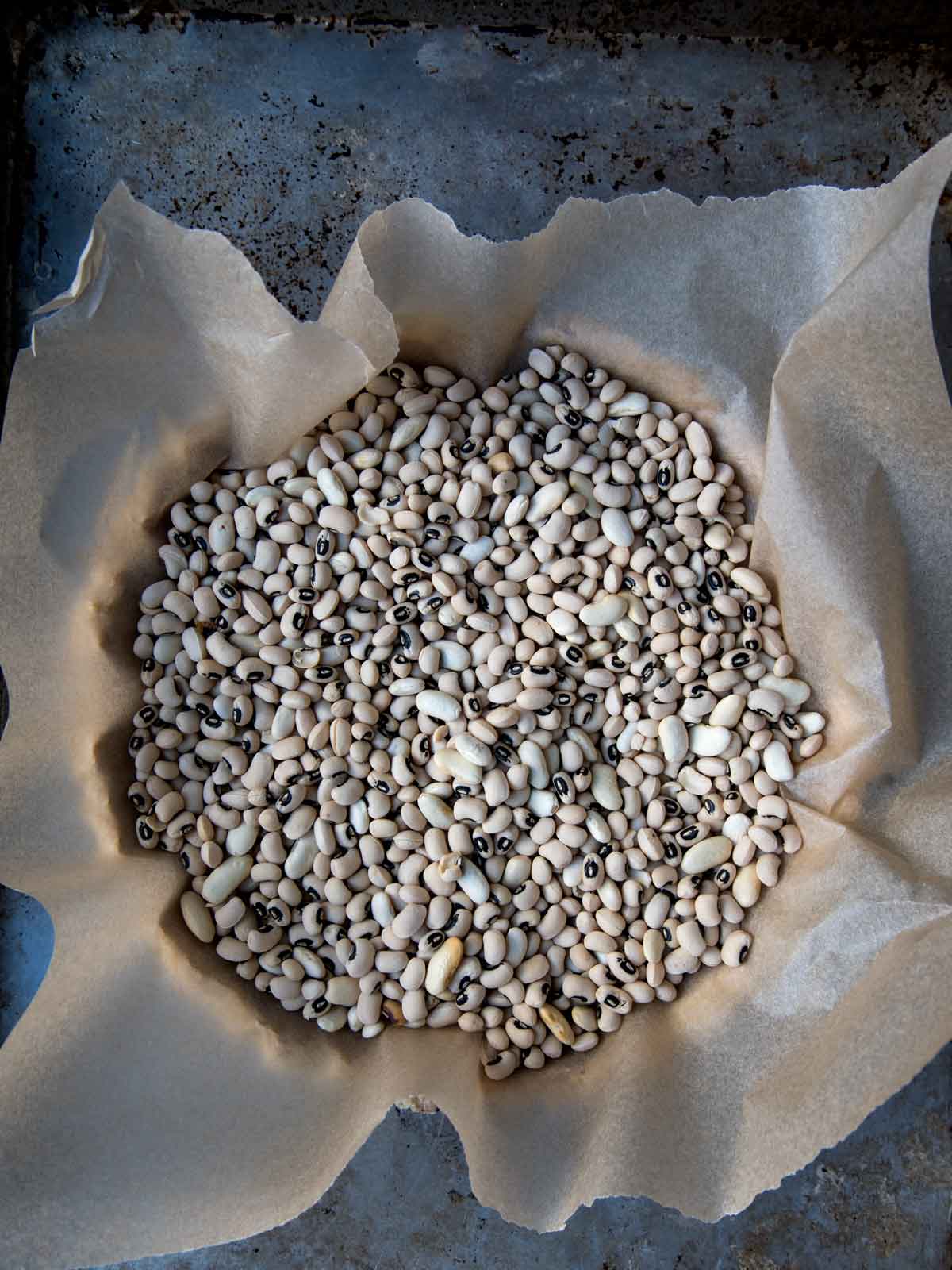
Before going in the oven…
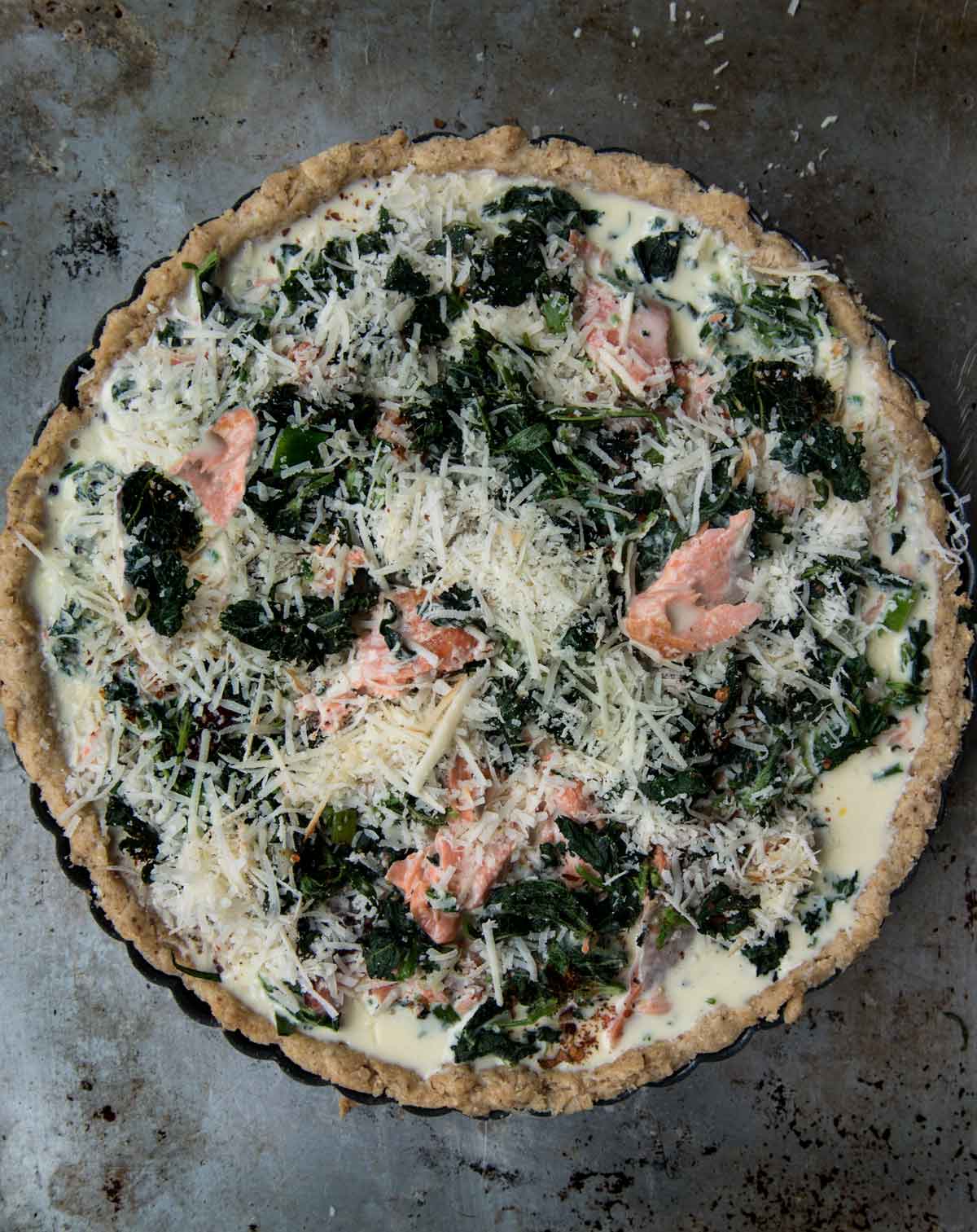
After…
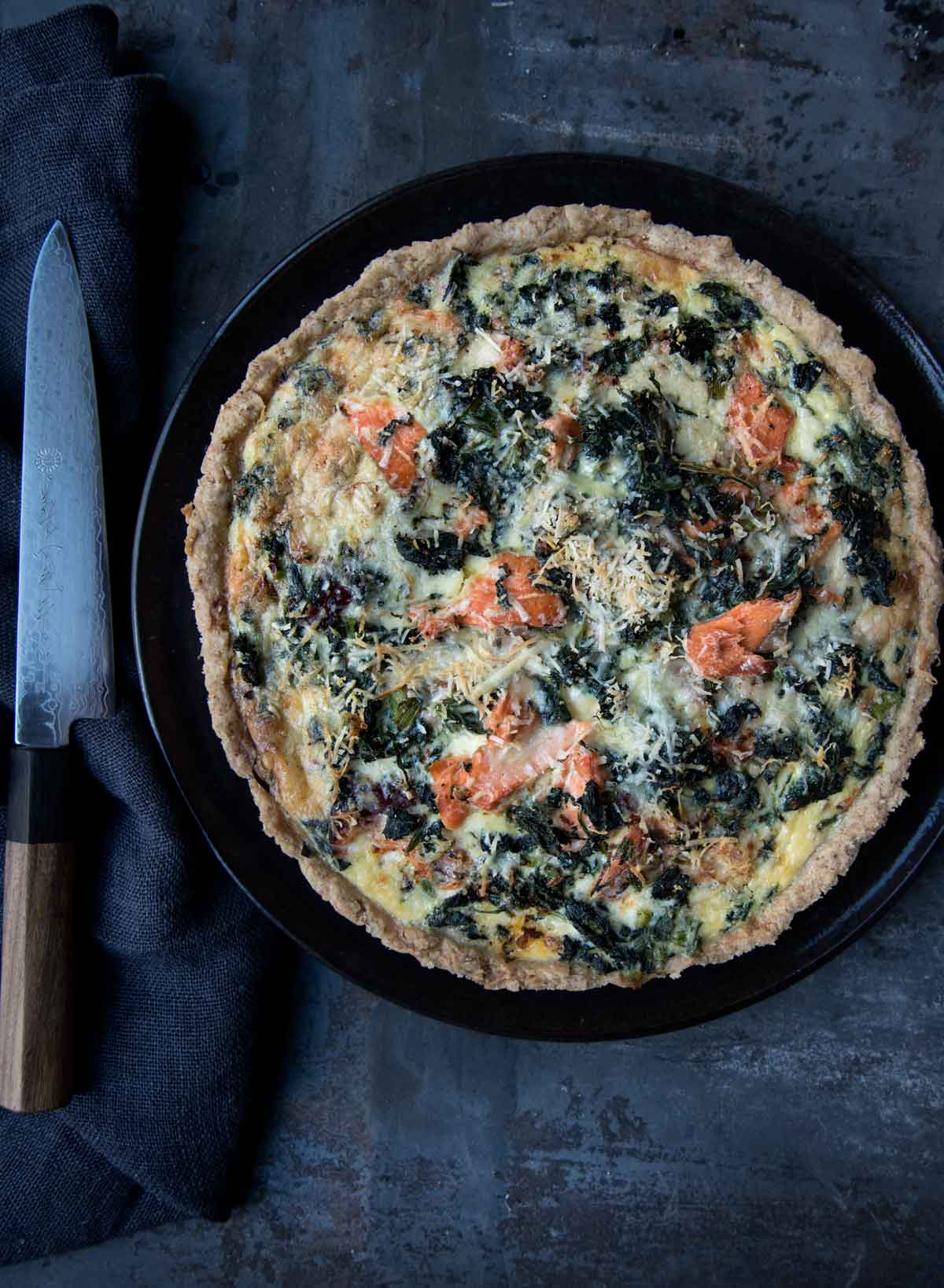
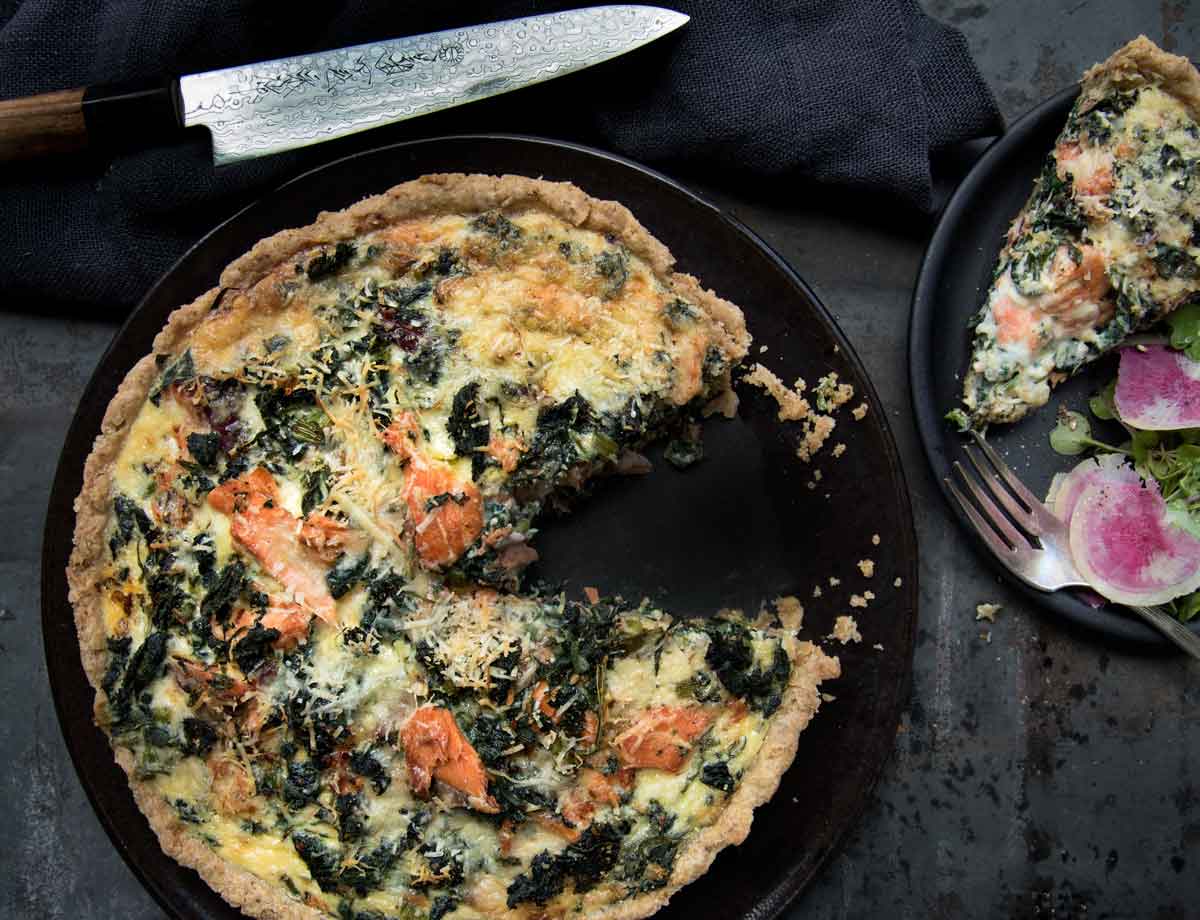
Stinging Nettle and Smoked Salmon Quiche with a Cornmeal Crust
Adapted from Lukas Volger
10 ounces stinging nettle
1 tablespoon butter
3 plump scallions
1/4 teaspoon red pepper flakes
3 duck or chicken eggs
3/4 cup milk or half and half
1/2 cup heavy cream
1/2 teaspoon salt
1/4 teaspoon pepper
6 ounces cooked or hot smoked salmon, flaked
1/2 cup grated Parmesan or Pecorino Romano cheese
1 recipe Cornmeal Crust (recipe below)
Preheat the oven to 375F. Bring a pot of water to boil. Drop the nettles into the boiling water. Cook for about 1 minute until the leaves are wilted. With a slotted spoon or tongs, transfer the nettles to a bowl of ice water. Drain and then pick off the leaves, discarding the stems. Squeeze out as much water as possible. Chop finely.
Heat the butter in a skillet. Add the scallions and pepper flakes and cook just until fragrant, about a minute or two. Add the blanched nettles and stir until evenly coated in the butter.
Whisk together the eggs, milk, cream, salt and pepper.
Sprinkle most of the cheese over the base of the tart shell, add the nettles and scallions on top. Add the flaked salmon. Evenly distribute the custard over top. Sprinkle with the remaining cheese.
Bake 35 to 40 minutes or until set in the center. Cool for at least 15 or 20 minutes before serving so that the quiche can set. Serve chilled or at room temperature.
Cornmeal Crust
1 cup all-purpose flour, plus more for dusting
1/3 cup cornmeal (fine to medium grind)
1/2 teaspoon salt
7 tablespoons cold, unsalted butter, cut into small cubes
3 to 6 tablespoons ice water
Combine the flour, cornmeal and salt in a large bowl. Using a pastry blender (or couple of forks), cut the butter into the flour, working it in until the butter is about the size of peas.
Sprinkle 3 tablespoons of ice water over the mixture and, using a light hand, mix it into the dough. Add more water, a tablespoon at a time, until the mixture just begins to form a ball and holds together without crumbling. Quickly shape the mixture into a disc, wrap it in plastic wrap and chill in the fridge for at least 30 minutes.
Lightly dust a clean working surface and a rolling pin with flour. Roll the dough into a circle about 13 inches in diameter and 1/8-inch thick. Drape the dough over the rolling pin and quickly (carefully) transfer it to a 10-inch tart pan. Press the dough into the tart pan and trim off the excess by running the rolling pin over the top of the tart pan. Cover again with plastic wrap and place in the refrigerator while you preheat the oven to 400F.
Prick the base of the shell all over with a fork. Place a piece of parchment paper over it and pour in some pie weights (e.g., dried beans). Bake for 15 minutes, remove the parchment and beans, then bake for 5 to 7 minutes more, until browned on the base. Cool slightly before proceeding with the quiche.
